Winter at Wimbledon - Inside the Slam that never sleeps
- Published

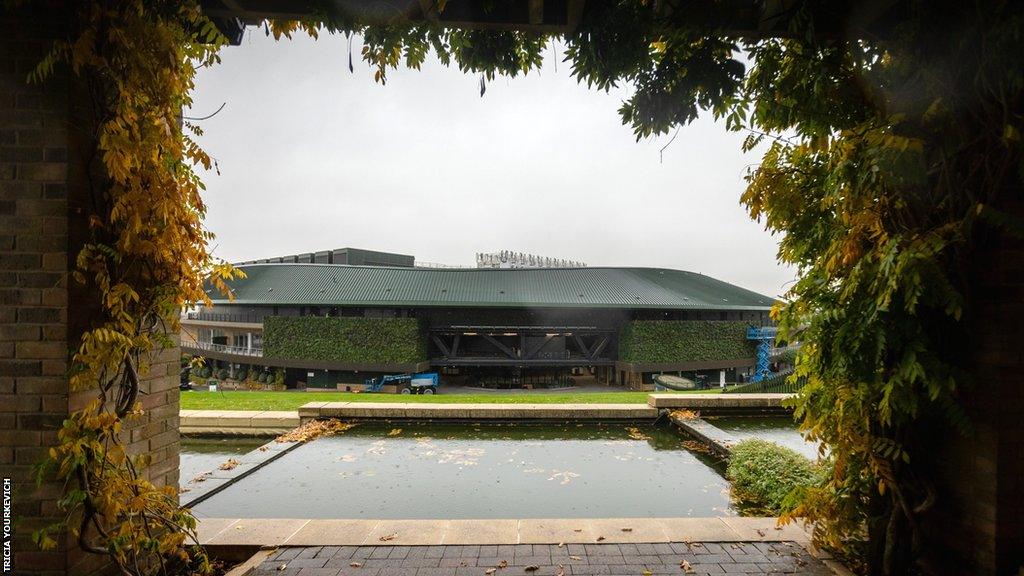
Sign up for notifications to the latest Insight features via the BBC Sport app and find the most recent in the series.
Today, it is just Little Nicky on The Hill.
In seven months or so, it will be teeming with spectators, sunbathing, sipping and soaking up Wimbledon's atmosphere and giant-screen action.
But now, as autumn turns towards winter, they are gone. The screen is too. And Little Nicky - as the All England Club groundstaff have dubbed their small GPS-guided robotic mower - is alone, trundling up and down the slope, trimming back any new growth.
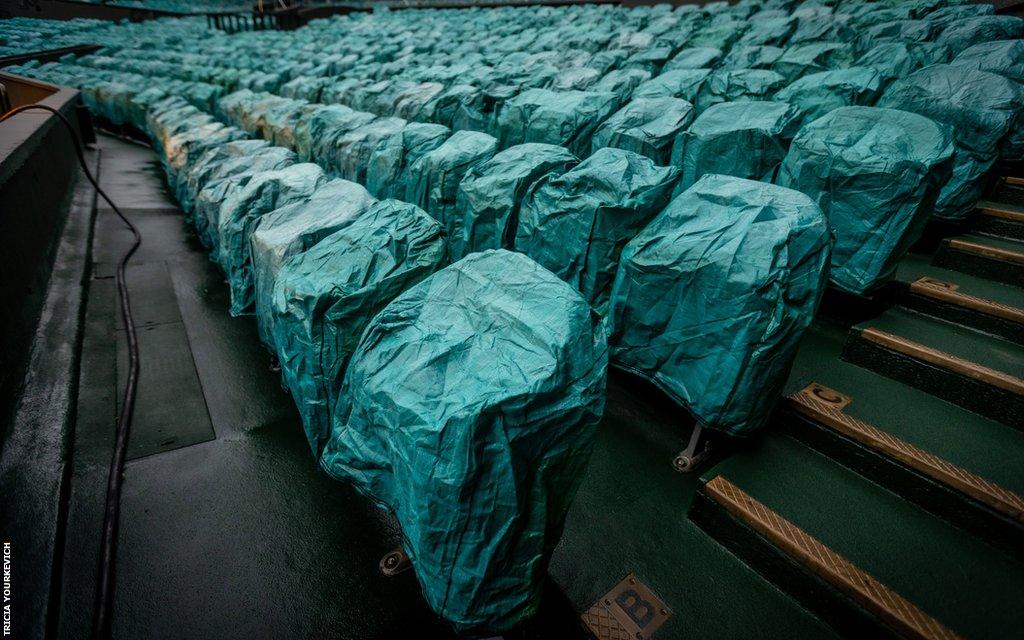
Little Nicky is not the only difference. Wimbledon has one of sport and summer's most recognisable palettes; sun-bleached whites, electric blue skies, two-tone lawn green and the occasional pop of scarlet strawberry.
In the drizzle and gloom, with the courts stripped back to bare postage stamps of turf and the seats hooded in tarpaulin, it is a more muted colour scheme. Ivy, that blends into the background in the summer, takes centre stage, wrapping Centre Court in a burnt orange.

It feels quiet, but, out of sight, plenty of work is under way.
"For me, it is probably as busy as any time of year," says Neil Stubley, head of courts and horticulture.
He has just been at a meeting reviewing July's championships. It was the 28th Wimbledon that Stubley (below) has worked on since his first, as a student, in 1995.
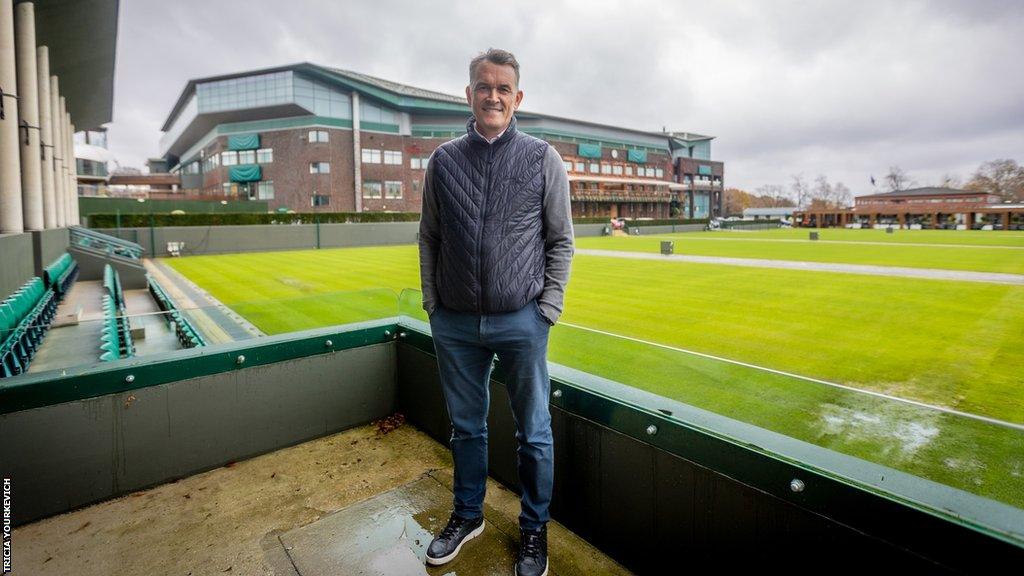
While he also has responsibility for areas like the Hill and Wimbledon Park golf course, which the All England Club bought in 2018, Stubley's primary focus is the same as most fans; the courts.
"Centre Court is probably one of the most scrutinised pieces of turf in the world," he says.
"We all come in with eyes wide open, we know what the challenge is."
By now, he will know more about the challenge for 2024. A 200-page document was set to land in his in-tray shortly before Christmas, postmarked from Bingley, West Yorkshire.
It will contain tens of thousands of data points collected by a team of three specialists from the town's Sports Turf Research Institute. The trio travel down the week before the Championship and test the courts, every morning and evening for the following three.
One test involves dropping a ball in select spots and measuring height of its bounce. In another, they insert a probe to different depths in the soil to collect moisture content readings. One analyst will get on their hands and knees to count the living blades within a wooden quadrant.
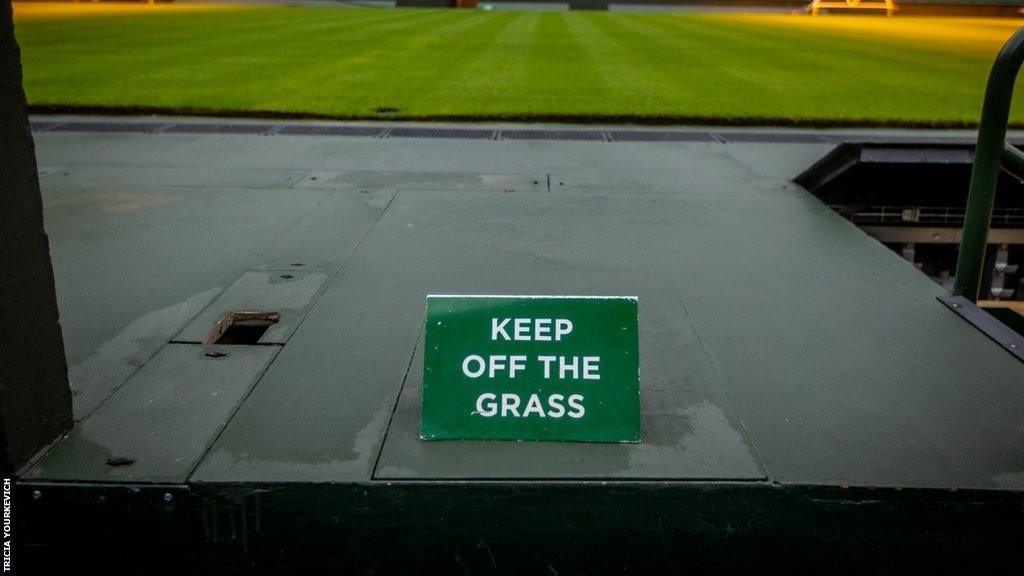
Hidden in the data, Stubley and his team will search for clues as to how they might make the grass last a little longer or the ball bounce a bit more consistently next year.
A lot depends on the weather. The key is keeping the surface hard enough for play, while locking in enough moisture lower down for the grass to stay alive.
But other factors are even harder to predict. London's foxes prowl the premises at night and their urine, high in nitrates, can scorch the summer grass.
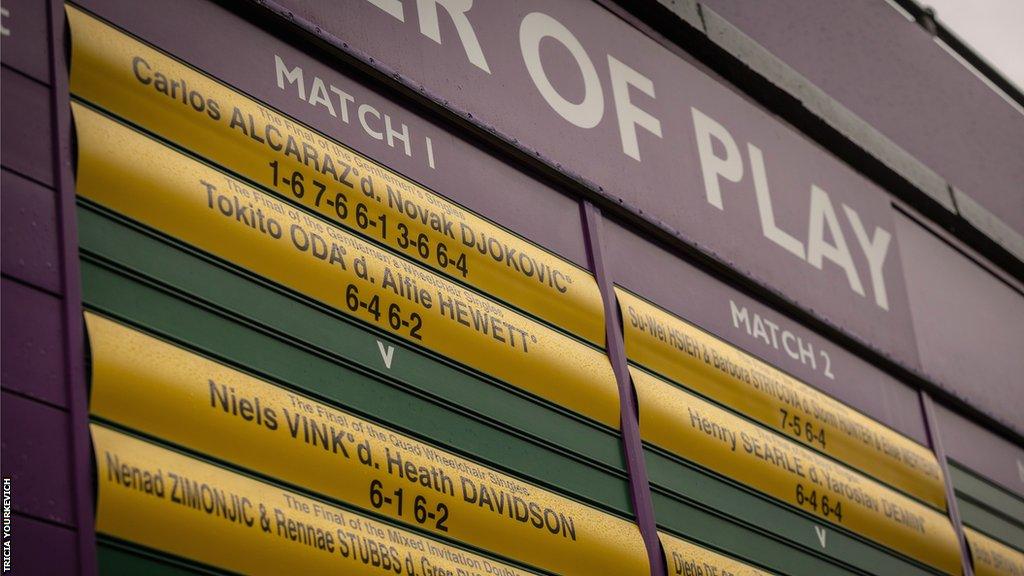
"If you get a rogue patch going off colour, you can stick your trusty knife in there, give it a sniff, and you will know exactly if a fox has weed on there," says Stubley.
"Then you try to dilute it with a load of water, but sometimes the grass will die. Then it is a case of putting down what we call 'groundman's paint' - grass clippings.
"That doesn't affect the play, because the characteristics of the court are in the soil, not the turf."
Such last-minute touch-ups are far from the mind of Will Brierley, the senior groundsperson who looks after the Championship courts, at the moment.
His task for autumn is the renovation of the courts. Wimbledon is the only Grand Slam played on a living surface, and also the only one hosted by a members' club.
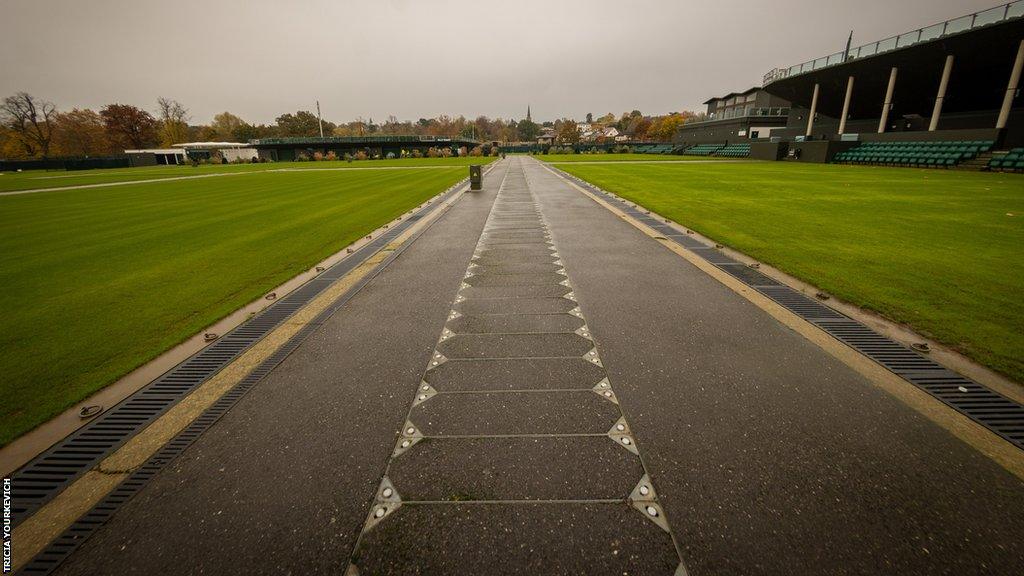
The All England Club regulars, who total about 500, play on the outside courts from mid-May though to mid-September.
When the Championships are over, Brierley and his team have to juggle keeping courts available to members while getting the necessary repairs done. Now that the entire season is finished, sunlamps bathe baselines in UV light. But, regardless, nature still holds sway.
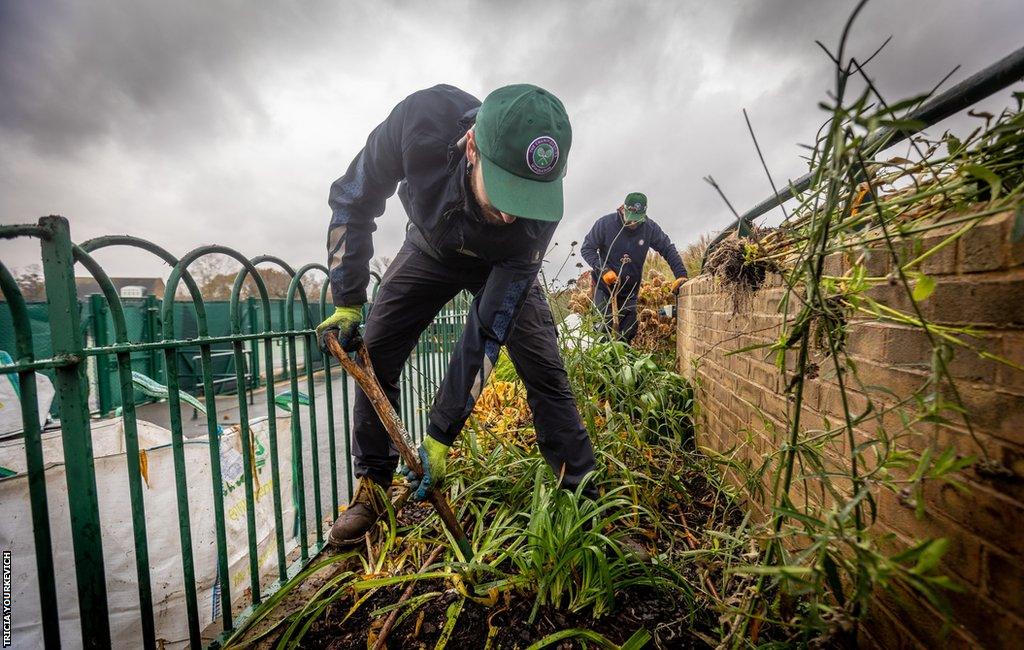
"Everything in my day-to-day is dictated by the weather," says Brierley, who admits that his lawn at home is "one quarter artificial turf, three quarters ruined by dogs".
"Tennis is played on a clay soil so when it rains hard it really restricts what we can do.
"When it is hammering down it is a case of getting on top of tidying the storeroom, auditing machinery, training staff and checking tools.
"It can get a bit tedious and frustrating. This year we had a very wet October and start of November.
"We could have done with another week or so of dry weather. Then I think we would have been exactly where I want us to be."

Martyn Falconer has a little more freedom from the forecast. As head gardener, he is in charge of the 50,000 plants that decorate the 42-acre site, fulfilling Wimbledon's promise of staging "tennis in an English garden".
Whatever the weather, there are hedges to trim, weeds to pull or compost to dig in. Ten thousand bulbs have just been planted. They will emerge, bloom and die back, all unseen by the half a million or more spectators who arrive later in the year during the Championship fortnight.
Weekly deliveries of plants in anticipation of the tournament, all logged in a master spreadsheet by Falconer, begin in early May and continue right up to the start of the Championships in July. The questions - from suppliers and others - start long before.
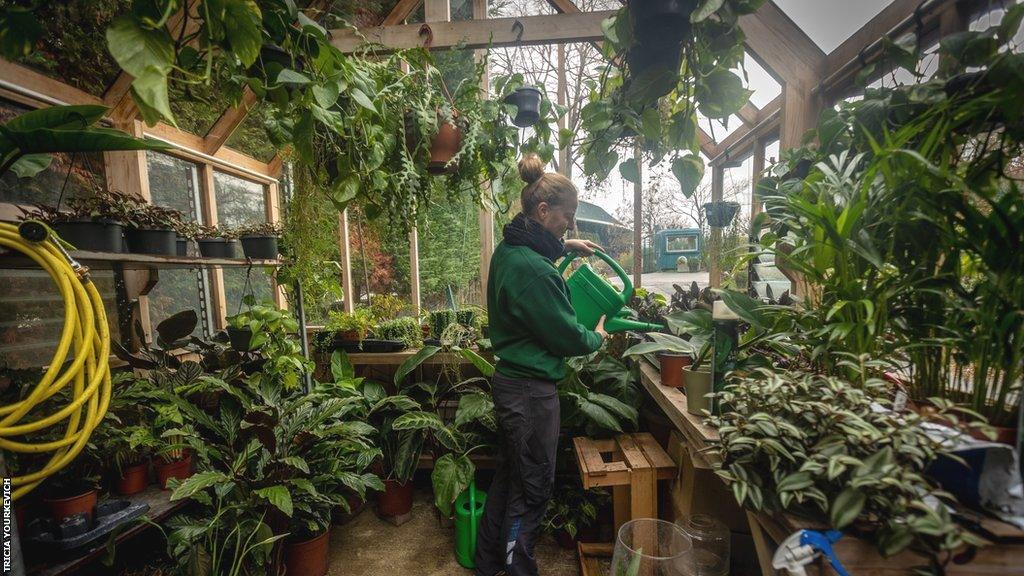
"The pressure slowly ramps up," he says. "Everyone comes back from Christmas and realises we have got a Championship!
"I have been here long enough to realise what is coming. It feels quite quiet, but it is just brewing…"
Falconer is attempting to stay in front of another trend - the warmer, wetter winters and hotter, drier summers caused by climate change.
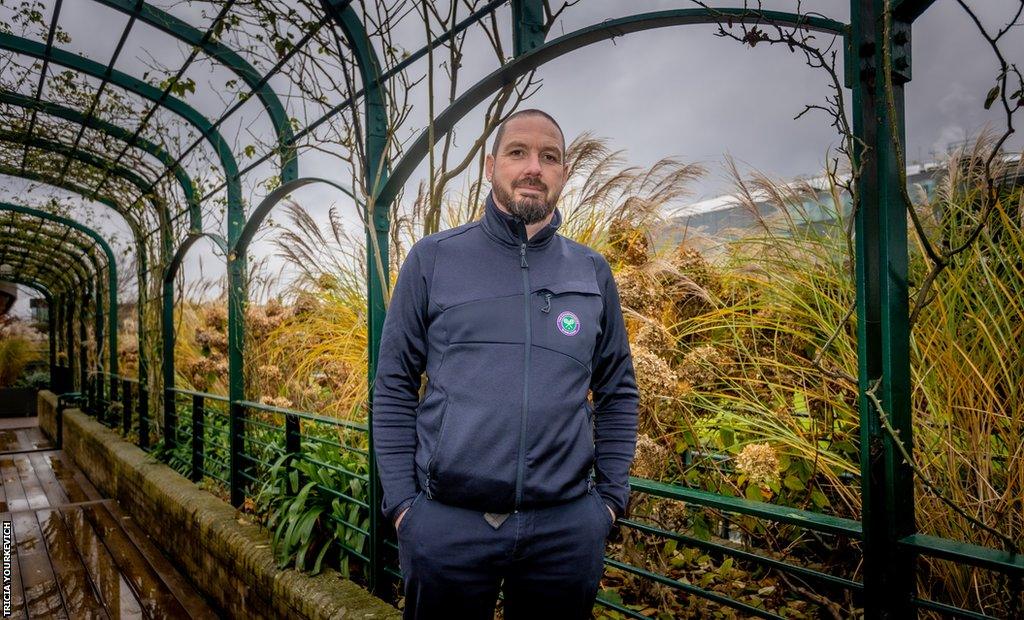
"The hotter summers mean we are looking at plants that will work well with less water," he says.
"It has certainly got hotter in the 24 years since I started here.
"In previous autumns I would be out on the tools, cutting hedges or tidying leaves and it was really cold. I would be all wrapped up. Now you can get away with just a jacket, you are more worried about staying dry than staying warm."
However the conditions fluctuate, for many of its fans, Wimbledon is a constant; a manicured corner of England which they can depend on summer after summer, year after year.
"There was a letter a few years ago that sticks in my mind," Falconer says.
"It was from someone who comes back every year. She used to enjoy the rose arbour with her husband. He has since died but she still comes back and sits there every year and enjoys it. She just said how it amazing it always looks.
"Little things like that are so nice."
